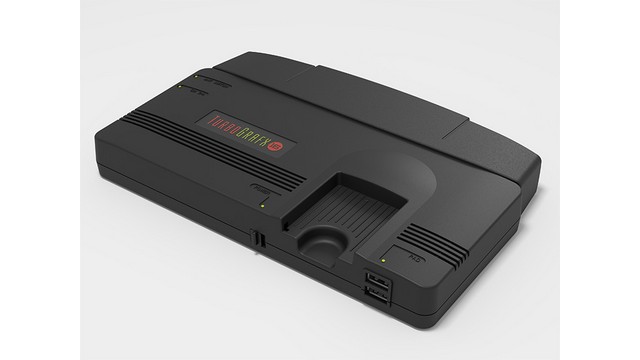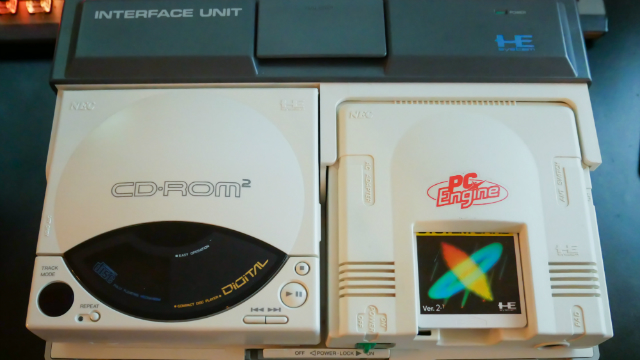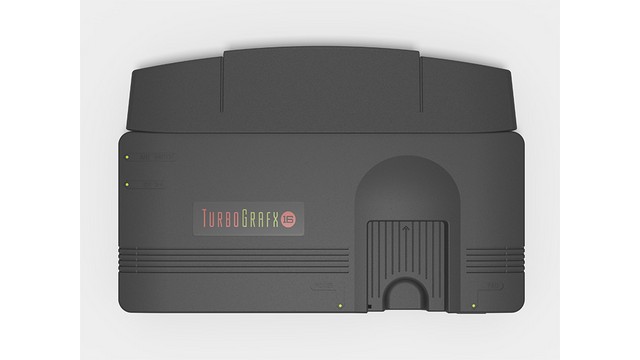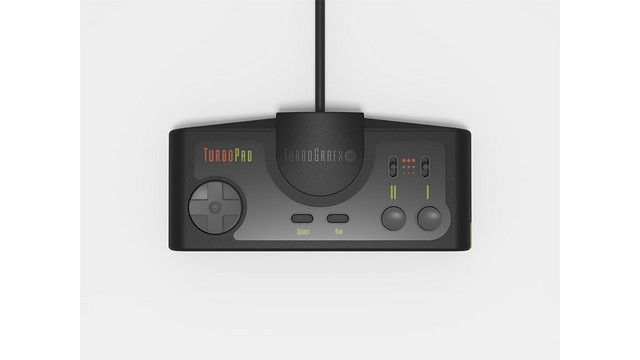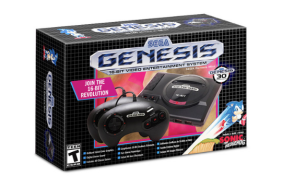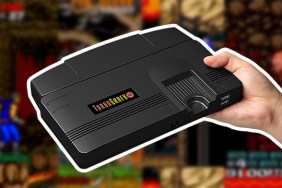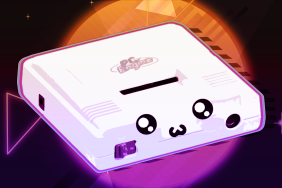The Turbografx-16 Mini is the latest product to tap into the microconsole craze. It may seem like Konami is a bit late to the party, as the NES Classic, SNES Classic, PlayStation Classic, and Genesis Mini all came and went awhile ago. However, the Turbografx-16 Mini has a significant advantage over those microconsoles. Where Nintendo, Sega, and Sony’s offerings brought retro favorites you’ve played before in a convenient package, the Turbografx-16 Mini introduces a host of fantastic games that you likely never got a chance to try when they were first released.
Before I get into the review proper, it’s necessary to go into a bit of history about the PC Engine/Turbografx. The collector’s market for these consoles is quite a bit different from collecting for the NES, SNES, Genesis, and other common consoles of the era.
Purchase the TurboGragx-16 Mini on Amazon for $99.99
TurboGrafx-16 Mini Review | The state of PC Engine/TG-16 collecting
I’m a retro enthusiast, so I have a modest collection of Hudson’s oft-overlooked consoles. There’s a lot of PC Engine/Turbografx hardware variations and add-ons, and so far I’ve managed to collect:
- CD-ROM2
- Coregrafx
- Duo-R
- Duo-RX
- PC Engine
- PC Engine Interface Unit
- Pioneer Laseractive PCE-N1
- Turbografx-16
So, I’ve spent a lot more time with the PC Engine/Turbografx than most gamers from the US have. Though the PC Engine was relatively successful in Japan, its US version, the Turbografx-16, never found its footing. That means there’s a ton of amazing games from the 16-bit era that are mostly unknown in the West.
Collecting for the PC Engine isn’t easy or inexpensive, and that goes double for the Turbografx-16. Unlike retro Nintendo prices, which are artificially inflated on the secondary market, PC Engine stuff is rare in the West. Furthermore, since the Turbografx never took off, not that much hardware and software was produced. So, not only are games expensive, but some of the best require a base console, a CD unit, and potentially a Super CD or Arcade CD RAM card. Complicating this is the fact that the CD units are notorious for bad capacitors, which makes finding a working unit an even tougher proposition.
To get into playing and collecting PC Engine and Turbografx-16 games, you’re looking at around $120-150 for the base console. If you don’t want to be locked out of about half the library, you’ll need to spend another $200 minimum for a working CD unit (or around $300-350 for a Duo system that combines the two functions).
TurboGrafx-16 Mini Review | Unknown classics
The Turbografx-16 gives players access to some of the best games from the core system and its add-ons. This is significant because some of these titles have never had an official US release before now.
The line-up of Turbografx-16 titles included on the Turbografx-16 Mini is:
- Air Zonk
- Alien Crush
- Blazing Lazers
- Bomberman ’93
- Bonk’s Revenge
- Cadash
- Chew-Man-Fu
- Dungeon Explorer
- J.J. & Jeff
- Lords Of Thunder
- Military Madness
- Moto Roader
- Neutopia
- Neutopia II
- New Adventure Island
- Ninja Spirit
- Parasol Stars
- Power Golf
- Psychosis
- R-Type
- Soldier Blade
- Space Harrier
- Splatterhouse (Censored)
- Victory Run
- Ys Book I & II
The remaining 32 titles are Japanese-only PC Engine games:
- Akumajō Dracula X Chi No Rondo
- Aldynes
- Appare! Gateball
- Bomberman ’94
- Bomberman Panic Bomber
- Chō Aniki
- Daimakaimura
- Dragon Spirit
- Dungeon Explorer
- Fantasy Zone
- Galaga ’88
- Ginga Fukei Densetsu Sapphire
- Gradius
- Gradius II: Gofer No Yabō
- Jaseiken Necromancer
- Nectaris
- Neutopia
- Neutopia II
- Ninja Ryūkenden
- PC Genjin
- Salamander (TG-Mini Exclusive)
- Seirei Senshi Spriggan
- Snatcher
- Spriggan Mark 2
- Star Parodier
- Super Darius
- Super Momotarō Dentetsu II
- Super Star Soldier
- The Genji and the Heike Clans
- The Kung Fu
- The Legend of Valkyrie
- Ys I・II
Considering games like Ginga Fukei Densetsu Sapphire are going for $700-$1200 on eBay, the Turbografx-16 is an excellent deal at $100. For that price, you get most of the greatest games the Turbografx-16 and PC Engine have to offer, though there are a few notable omissions. In particular, I was astonished that Gates of Thunder didn’t make the cut.
Most of the Japanese-only titles are playable even if you aren’t fluent in that language. Many of these games are shooters or platformers, so you can easily pick up how to play even if the onscreen text is indecipherable to you. However, a few titles are essentially rendered curiosities to non-Japanese speakers. I would have loved to have seen Konami translate at least a few of these. Snatcher in English, for example, would have made this microconsole even more appealing as that title hasn’t had an English run since its original release on Sega CD in 1995.
Also perplexing is the decision to release the censored Turbografx-16 version of Splatterhouse without its uncensored PC Engine companion. The Japanese Splatterhouse would have been a much better addition to the TG-16 Mini line-up than, say, the PC Engine version of Ys I・II, which requires extensive knowledge of Japanese to play.
TurboGrafx-16 Mini Review | Redesigning an icon
The interface on the TG16-Mini is top-notch. The menus have an excellent retro design that matches the consoles, and you can helpfully flip between TurboGrafx and PC Engine titles with the press of a button. M2, the same company that produced the Genesis Mini for Sega, is behind the TG-16 Mini and PC Engine Mini, and that same quality can be found here.
Each title has multiple save state slots, which gives the TG-16 Mini more utility than an original console paired with an SSDS3 or Turbo Everdrive. While I love those two products for playing my backups easily and preserving my original (and way too expensive) media, they’re just not plug-and-play solutions.
The console itself is a Turbografx-16 in miniature. I’d put it at around 3/4 the size of the original TG-16, which makes it around the size of a PS2 slim. It’s the largest microconsole I own, but that’s because it follows the lines of the original TG-16, which was an awkwardly designed system (he thicc boi). As much as I love the very 90s design of the TG-16, I wish we would have gotten a choice to pick up the European (Coregrafx) or Japanese (PC Engine) chassis, which are a lot more compact. The original PC Engine has the most compact design of any console of the time, and I’ve written about how much I adore it before. However, Konami has made the best of the space. The rear expansion port cover covers the HDMI and power ports so that you can tuck all those wires out of sight.
The controller does a great job of emulating that classic Turbografx-16 feel. As far as I can tell, the build quality is spot on, and it even includes the turbo switches that are practically essential for some games. Unfortunately, like every other microconsole, the TG-16 Mini’s controllers are wired. I would have absolutely loved to have had wireless controllers with this console, and that would have propelled it past the original hardware in my eyes.
I prefer wireless controllers, even on my original retro hardware, because I have a dumb little dog that likes getting tangled in everything. Unfortunately, the original PC Engine/TG-16 has only one type of wireless controller, which is incredibly expensive. So, getting that functionality with the Mini would keep my OG consoles on the shelves a lot longer.
Additionally, the TG-16 Mini controllers connect via USB instead of the original DIN plug. This is a mixed bag for me. There’s no way to insert them incorrectly and destroy the pins, which is good. However, it would have been cool to have the old plug on the new controllers so you could use them on original hardware. Two-player fans will be excited to hear the TG-16 Mini comes with two USB ports, allowing for multiplayer without a multi-tap, which is a significant improvement over the original design.
TurboGrafx-16 Mini Review | The microconsole that makes a difference
The TG-16 Mini is maybe the most exciting microconsole to date. Whereas previous entries into the market have just had games we’ve already played in convenient, attractive packages, this product offers players a lot of titles that never made their way overseas.
Some of the games included are hit and miss, but there are a ton of amazing titles in there that you don’t want to miss. The Turbografx-16 Mini is an affordable, plug-and-play introduction into the severely underrated world of the PC Engine. It’s the first microconsole to offer a set of truly rare titles, and it’s definitely worth the price of admission for any retro enthusiast.
